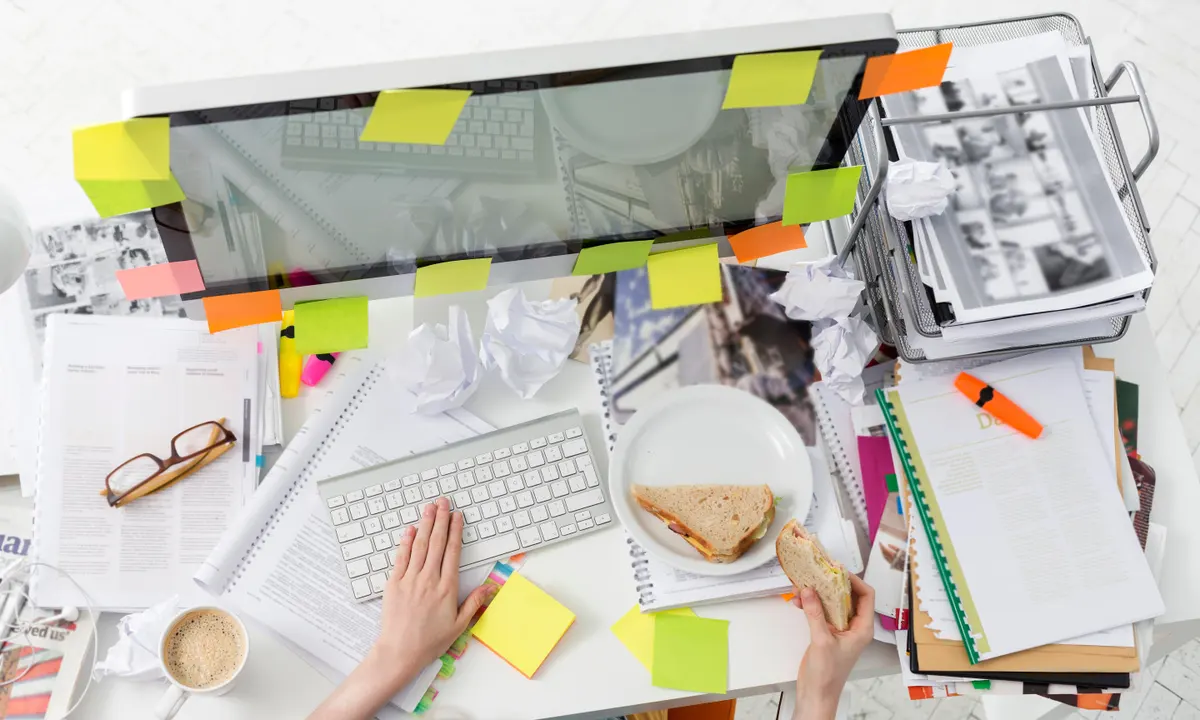In the realm of technological advancements, the proliferation of digital tools and services has been both a boon and a challenge. Navigating through the era of information overload, the need for efficient tools to manage and declutter our digital lives is more pressing than ever. This article explores the role of online image to text tools in striking a balance between embracing technology and maintaining a decluttered digital space.
The Rise of Digital Clutter
The digital age has ushered in an era of unprecedented data creation and consumption. From personal photographs to professional documents, our digital repositories are swelling with an ever-growing collection of files. This accumulation often leads to a cluttered and disorganized digital environment, making it difficult to find, access, and effectively use the information internet users store.
Understanding Digital Hoarding
Digital hoarding, characterized by the excessive collection and reluctance to delete digital content, is a phenomenon increasingly recognized in our society. This behavior often stems from the fear of losing important information or memories, leading to digital spaces filled with redundant or unnecessary files.
Embracing Efficient Technologies
In the quest to declutter our digital lives, technology itself offers powerful solutions. Online image-to-text tools are a prime example of how technology can be harnessed to streamline and organize digital content. These tools convert visual data from images into editable, searchable text, thereby reducing the need to store multiple formats of the same content.
The Role of image-to-text Conversion
The process of image-to-text conversion is a significant step in managing digital clutter. By extracting text from images, these tools transform unstructured data into a format that is easier to organize, search, and archive. This conversion not only saves storage space but also enhances the accessibility and usability of the information contained within images.
A Tool for Professional and Personal Use
Online image to text tools are not limited to professional use. They are equally valuable in personal contexts, where they help in organizing personal documents, receipts, handwritten notes, and more. By converting these items into digital text, individuals can declutter their physical and digital spaces, making it easier to manage and retrieve important information.
Streamlining Workflow
For professionals, these tools are indispensable in streamlining workflow. They aid in quickly converting scanned documents, screenshots, and photographs into editable text, thereby saving time and increasing productivity. This efficiency is particularly beneficial in sectors like law, academia, and journalism, where dealing with large volumes of text is commonplace.
Balancing Technology and Minimalism
While technology offers solutions, it also necessitates a balanced approach. The key is not to shun technology but to use it judiciously. Online image to text tools exemplify this balance by providing a means to reduce digital clutter while leveraging technological advancements.
Integration with Cloud Storage
Integrating these tools with cloud storage solutions further enhances their utility. By storing converted text online, users can access their data from anywhere, share it easily, and maintain a backup, all while keeping their local storage uncluttered.
The Future of Digital Organization
The future of digital organization lies in the development of more intuitive and powerful decluttering tools. As artificial intelligence and machine learning continue to evolve, that’s expected for image-to-text tools to become more sophisticated, offering higher accuracy and the ability to handle complex and varied formats which can also be further optimized with online resize picture tools for better quality.
Anticipating Advanced Features
Looking ahead, several advanced features are anticipated to become integral to these tools:
- Improved Language Recognition: Future iterations of image-to-text tools are expected to support a broader range of languages, including those with complex scripts and dialects. This improvement will significantly enhance the accessibility and usability of these tools for a global audience.
- Context-Aware Text Extraction: As AI and ML models become more sophisticated, these tools will likely develop the ability to understand the context within which text appears in images. This capability will enable more accurate and meaningful extraction of information, going beyond the surface level to interpret the underlying intent or message.
- Seamless Integration with Other Digital Tools: Anticipated advancements include better integration capabilities with a variety of digital organization tools. This integration could encompass cloud storage systems, document management platforms, and even personal productivity apps. Such seamless integration will ensure that text extracted from images is easily accessible and can be efficiently utilized across different platforms.
- Customizable Extraction Settings: Future tools may offer customizable settings to tailor the text extraction process according to specific needs. This feature could include options for focusing on particular areas of an image, recognizing specific types of data (like extracting only numerical data from a receipt), or applying different processing techniques based on the content type.
- Advanced Security Features: As these tools handle potentially sensitive information, advancements in security features are also expected. This might include enhanced encryption methods, secure cloud storage options, and robust privacy controls to protect user data.
In essence, the future of digital organization through image to text tools is not just about technological advancement but about creating a more efficient, accessible, and secure digital environment. These tools are poised to become an indispensable component in our ongoing quest to manage digital clutter effectively, thereby enhancing our overall digital experience.
Conclusion
In conclusion, online image-to-text tools stand as a testament to technology’s potential to simplify and declutter digital lives. By converting visual data into manageable text, these tools assist in navigating the challenges of digital hoarding and information overload. Embracing these tools leads towards a more organized, efficient, and balanced digital existence.
